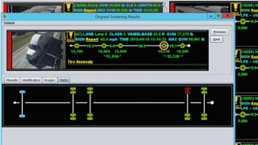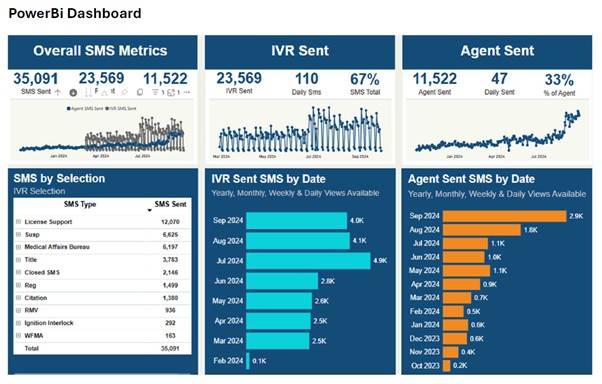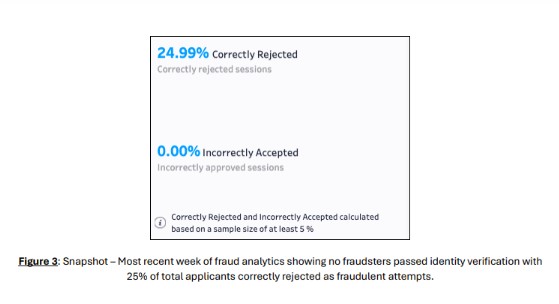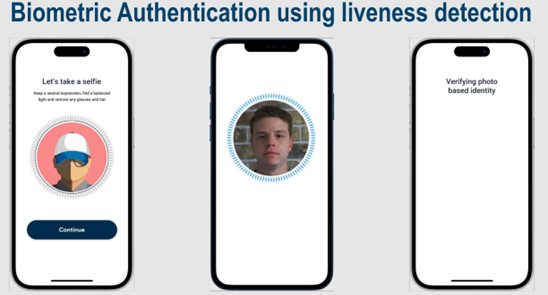This award is presented to jurisdictions who have implemented technology tools that directly enhance access to services or the service experience.
This is an agency award and is awarded one per each region and among those, an international winner is selected.
Each agency may submit only ONE entry.
Criteria for selection:
- Technology is related to the delivery and improvement of service
- Quantitative data shows dollar return on investment, staff efficiencies, and/or increased adoption of electronic services
- Program demonstrates a measurable benefit to the public and the agency
- Program serves as an inspiration or model for further innovation
2025 Winners
International and Region 4
Idaho Department of Motor Vehicles
Tire Anomaly Classification System
Worn out commercial truck tires can be a serious safety concern for truck drivers as well as nearby vehicles. Most significant wear and tear happens to inside tires, which is harder to spot on a moving vehicle. In an effort to gather more accurate measurements, the DMV has installed 9 Tire Anomaly Classification Systems at ports of entry across Idaho over the last year. Using this new technology has caught (and corrected) 3907 tires in just this last year.
Region 1
Massachusetts Registry of Motor Vehicles
SMS Text Messaging
The Massachusetts RMV implemented a SMS text messaging solution that enhances RMV customer interactions by providing quick access to essential forms, policies, and service information. This innovative tool has improved service accessibility, reduced call volume, and decreased the need for repeat calls, serving as an exemplary model of how technology can streamline public service delivery and increase both customer satisfaction and agency efficiency. The SMS solution has elevated the RMV’s service delivery standards, offering timely, accurate support to customers. By leveraging mobile technology to deliver essential information, this program has provided measurable benefits to both the public and agency.
Region 2
Georgia Department of Driver Services
Georgia DDS Improves Address Change and Password Reset Functions for Security
The Department of Driver Services (DDS) partnered with Incode Technologies to deliver an integrated solution for customers to validate their identity using Incode’s Biometric Identity Verification Service when requesting address changes and password resets. The solution enables DDS to better meet the needs of our citizens and improve the productivity of our Contact Center and Customer Service Centers (CSCs) by allowing customers to perform identity verification online and freeing up those resources to service customers who must conduct their business in-person. DDS has since processed nearly 400,000 address changes with an accuracy of 98%, and in just the first two months, they reduced the call center’s volume by nearly 10,000 calls.
Region 3
Wisconsin Department of Transportation Division of Motor Vehicles
Biometric Authentication - Identity Proofing through Liveness Detection
Wisconsin DMV determined additional security features were necessary for three online applications that were experiencing the most fraudulent attempts: Purchasing your own driving record, applying for a duplicate driver license or ID card, and renewing your driver license or ID card. The Incode Omni platform is integrated in these three WI DMV online applications. A customer is prompted to take their selfie on either a mobile device or using a desktop camera. After the customer takes the selfie, the Incode Omni Platform retrieves the photo by using a unique image ID which is passed to Canadian Bank Note (CBN) to request the image. Both the selfie and DMV image are put into a template and an irreversible mathematical representation of the image compares the two templates, which then calculates the match score. Upon completion of the comparison, the WI DMV application receives the match score and is assured that the person on the other end of the web session is who they say they are, and the resident can continue their online WI DMV transaction.
